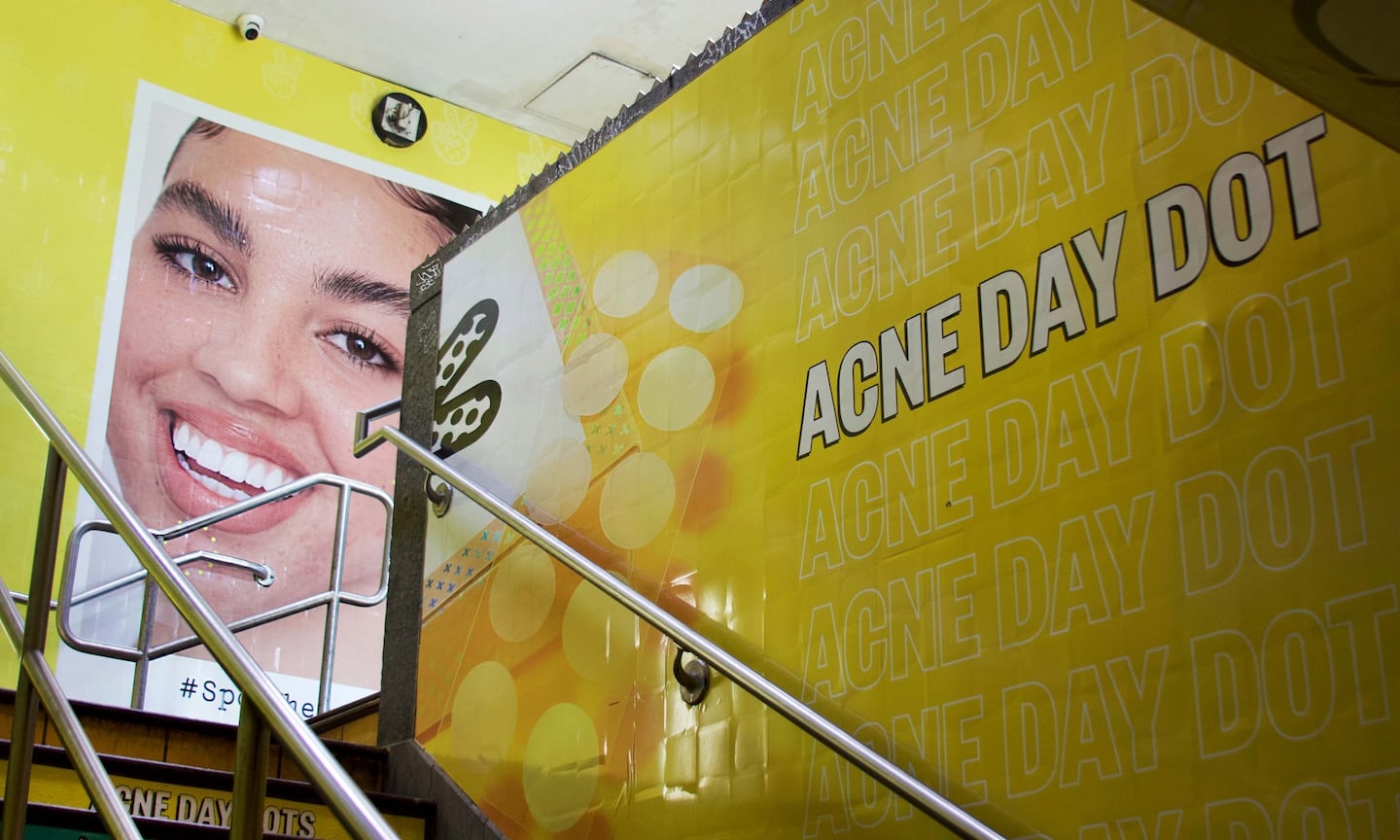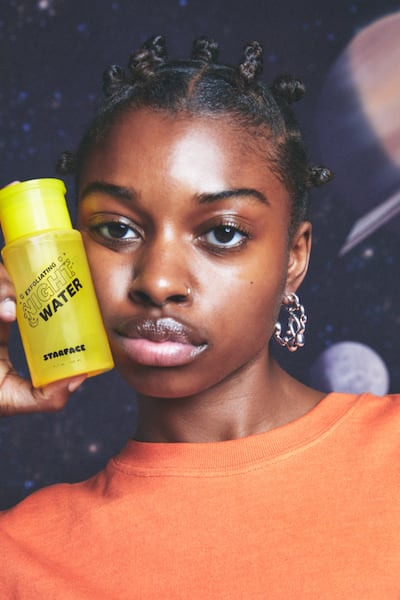
The Business of Fashion
Agenda-setting intelligence, analysis and advice for the global fashion community.

Agenda-setting intelligence, analysis and advice for the global fashion community.

If Millennials had pink, then Gen-Z, it seems, has yellow.
Since 2017, internet culture critics have been proclaiming “Gen-Z Yellow” — a bright, sunny, impossible-to-ignore hue — as the generation’s defining colour.
At first, Gen-Z Yellow was more of a wardrobe staple than a major marketing presence, but as time has gone on — and Gen-Z’s cultural dominance has grown — it’s also become a particular favourite for beauty and personal care brands. Most notably, acne patch label Starface is synonymous with an ultra-bright shade of yellow, but there’s also skin care company Peace Out, which selected the colour for the packaging and marketing materials for its latest product drop, the Acne Day Dot; Gen-Z favourite skin care label Topicals, that sells products like its “Like Butter” hydrating mask in a yellow tube; and makeup label Kosas, which makes its concealer and foundation in bright yellow-accented packaging. Its influence also reaches outside of beauty: PepsiCo recently launched Starry, a lemon-flavoured soda covered in bright-yellow branding.
“Taking risks and being bold with something as simple as your colour palette speaks to one behaviour of Gen-Z,” said Shaina Zafar, co-founder and chief marketing officer at Juv Consulting, a Gen-Z focused marketing agency that’s worked with clients like Unilever and recently partnered with BoF Insights on a Gen-Z fashion report.
ADVERTISEMENT
But despite yellow’s current dominance, it’s unlikely that the colour will ever become the behemoth that was Millennial pink. That hue ultimately became synonymous with the 2010s thanks in large part to DTC beauty pioneer Glossier, and later brands like period underwear label Thinx and Scandi apparel label Acne Studios, all of which deployed a similar shade of pink across their branding.
And that’s probably a good thing. Gen-Z yellow is likely too bold and bright to be adopted by the masses, and for a generation obsessed with curating their aesthetic on social media, the idea of following something as obvious as a colour trend feels uncool. The sheer proliferation of Millennial pink on products from cookware to lip balm — not to mention the cultural consciousness of its popularity — has made marketers wary of hopping on board the next colour fad.
Gen-Z Yellow, in many ways, speaks to the environment that the generation has grown up in. Though they’re mostly under the age of 25, Gen-Z has come of age in a time of turmoil. They’re the generation that saw their high school or university experiences irrevocably tainted by Covid-19 and cast their first ballots in the contentious presidential elections of 2016 or 2020.
“We’re in a world that’s very noisy, very chaotic, and you have a lot of darkness, a pandemic and civil unrest,” said Sunny Bonnell, co-founder and CEO at branding agency Motto. “That colour is a way to break through that and to actually be able to have a sense of hope and optimism.”
But while they’re hopeful and optimistic for the future — a fit for sunny yellow — they’re also outspoken about the need to make change to ensure that future comes to pass.
“We’re not like a muted generation and a muted colour palette isn’t reflective of us,” said Laura Montilla, a senior account executive at Edelman and a member of the agency’s Gen-Z lab.

Bright yellow is also a colour that Gen-Z grew up around. As the first generation that grew up on the internet, bright-yellow emojis have always been a primary language asset and the ultra-yellow-branded Snapchat is one of its go-to forms of communication.
For the brands that incorporate Gen-Z yellow into their branding, the benefits are obvious. It’s an impossible-to-ignore colour that stands out on store shelves. And it is synonymous with happiness and positivity, two attributes any brand would love to have their product be associated with. Starface embraced yellow (the brand’s packaging, website and branding is all covered in the hue) in part as a way to take preconceived notions around acne and turn them on its head.
ADVERTISEMENT
“You can’t disappear with that bright yellow star on your face, and that’s exactly what we want to lean into,” said Kara Brothers-Phillips, general manager at Starface.
Yellow’s history as a gender-neutral, positive colour also has helped propel it forward, added Bonnell.
Millennial pink made people realise how far colour trends could reach. But when it reached mainstream ubiquity, the inevitable backlash followed. Over time, there was a shift, Millennial pink was no longer cutting edge, it was tired.
“If we see a lot of brands emerge and use it and create an immediate inflection point, it’ll feel like it’s a fad,” said Zafar. “And anytime that Gen-Z thinks something’s being overused, that’s when it becomes irrelevant.”
To boot, to use a bold colour like Gen-Z yellow, brands need to be okay with standing out. Bonnell said she’s had several clients that have felt uncomfortable using bright colours in their branding. Samantha Edwards, co-founder and chief creative officer at The Charles, a New York-based creative digital agency, said that because of its impossible-to-ignore nature, we may see brands incorporate Gen-Z yellow in more subtle ways, like on an individual product (like Peace Out’s Acne Day Dot) or as part of a social media campaign.
“We think … can this colour ever get boring or tired?” said Peace Out Skincare’s creative director Junior Scott Pence of selecting the bright yellow colour for the Acne Day Dot. “We want to make sure that we’re choosing the right colour that can transition with a lifetime at the brand.”
However, if Gen-Z yellow never reaches the saturation levels that Millennial pink did, that’s good news for the brands that have bet on it. If it’s not every brand’s go-to hue, then it’s easier for the ones that do use it to keep the colour cool.
“Trends are moving at such a rapid pace that it might have a moment, but that moment definitely disperses,” said Edwards.
 Opens in new window
Opens in new windowA new generation of direct-to-consumer brands like Topicals and Parade are finding success with a powerful community-based approach to marketing.
The direct-to-consumer fashion and beauty space has flourished over the last decade, but the once fool-proof marketing rubric has aged in that time. BoF outlines how to update the DTC marketing playbook so brands can break through the saturated market.
The electric-pink hue has dominated fashion for the past year — thanks to a collusion of trends like Barbiecore and dopamine dressing, alongside major commitment from Pierpaolo Piccioli’s Valentino.

Diana Pearl is News and Features Editor at The Business of Fashion. She is based in New York and drives BoF’s marketing and media coverage.
The showcase translated the company’s global insights consumer study into scent profiles, technologies and fragrances.
The Estée Lauder-owned premium fragrance house has signed a two-year deal with the actor in a bet to seize more of the men’s market.
From medspas to telemedicine, weight loss drugs are becoming adopted for mainstream cosmetic use.
Mature consumers have long been ignored by the beauty industry. Now a small but growing number of emerging brands are responding to the needs of those over the age of 45 in a bid to cash in on their $15 trillion spending power.